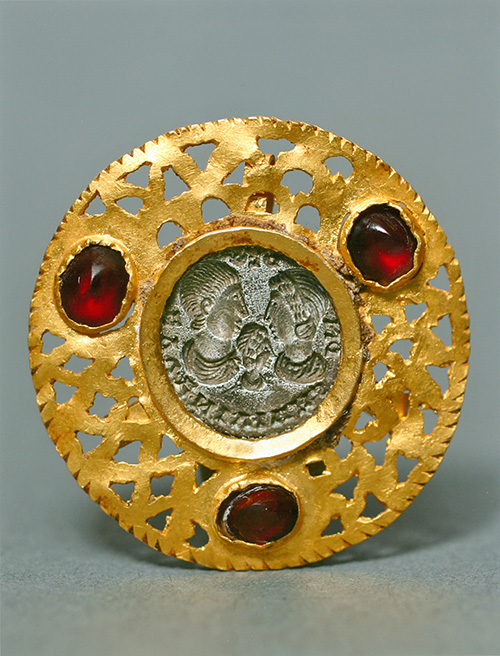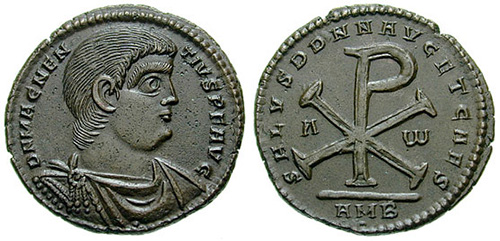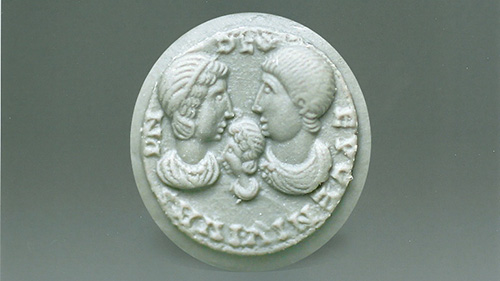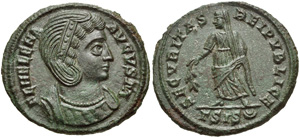Great Collections Make Great Museums: Constantinian Era Pendant
Great Collections Make Great Museums – An ongoing blog describing recent acquisitions added to the Greek, Etruscan, Roman or Byzantine Collections.

Gold pendant with silver seal dated to about AD 350. (Museum accession number: 2010.32.1). Acquisition made possible by the generosity of the Louise Hawley Stone Charitable Trust and the Estate of Mona Campbell.
Although the first object we’ll be looking at is small, it tells an important story about early Christianity during the Constantinian era (AD 307-364).
The pendant was made after the official recognition of Christianity in AD 313. It is composed of a gold openwork disc (3.11 cm by 3.08 cm) set with three garnets and a flat circular silver seal (diameter: 1.4 cm) engraved with a husband, his wife and their daughter. The engraved inscription reads, “EUGENI VIVAS IN DEO” which translates to “Eugenius live in God”. Our example is very special and rare because it is still housed in its original gold mount.
Hair styles worn by the people portrayed are important hints that help us date the jewellery. On the small disc, the coiffeurs are close enough renderings of a style worn by women and men during the Constantinian era.
The wife is wearing a tunic, a beaded necklace and a hair band. Her hair is arranged in thick curls over her forehead and is braided in a series of narrow rows over her head. A large wave covers her ear. Her hair is somewhat close to the style of Helena, Constantine’s mother.
Eugenius, the husband, is draped in a toga and a mantle held in place by a pearled fibula. His hair is brushed forward from back to front, in true Constantinian style.

Double Centenionalis of Magnentius, struck AD 350-351. Courtesy of the Classical Numismatic Group, Inc.
In Rome, the family has always played an important role in the establishment of a person’s identity and citizenship. A family was not only an emotional safe haven but offered economic support and was the institution through which wealth and property was secured and transmitted. Because of the importance of the family, Romans took measures to protect it. One way was by wearing amulets with apotropaic powers to ward off the harmful supernatural powers around them.
One amulet wore by Romans since the 3rd century was a coin. Sometimes a coin was simply pierced and worn around the neck or set in elaborate gold necklaces, pendants and brooches. Romans believed in the supernatural power of coins especially those with the Emperor’s portrait. The Emperor’s image acted as a talisman with the ability to avert evils of all kinds.
By the mid-fourth century as Christianity took hold, the portrait of a family sometimes replaced the Imperial portrait on pendants. Here, the portrait of Eugenius, his wife and their daughter have replaced the Imperial family. This change gives our pendant the appearance of a pseudo-coin type. The acclamation on the pendant, “Eugenius live in God”, is not proclaimed to honour an Emperor or a pagan deity but to acknowledge the one God of the Christians; Eugenius affirming his belief in Christianity. Such expressions often become apotropaic; the praise of God invokes his aid against invisible sinister powers. Thus the image and the inscription work together as an amulet to protect Eugenius and his family form unseen harm.
You can see the pendant on display in the jewellery case in the Joey and Toby Tanenbaum Gallery of Rome and the Near East.


